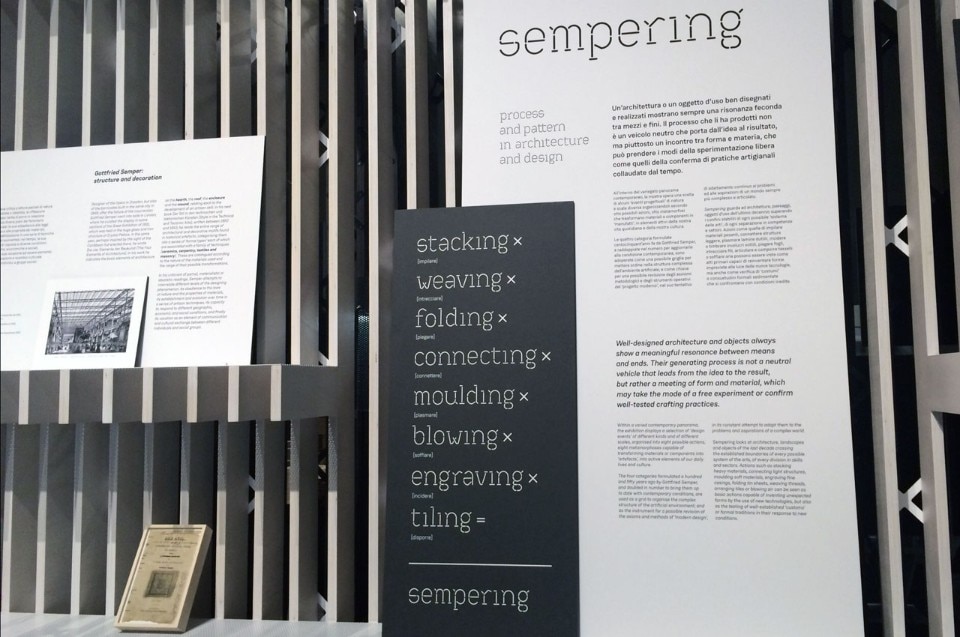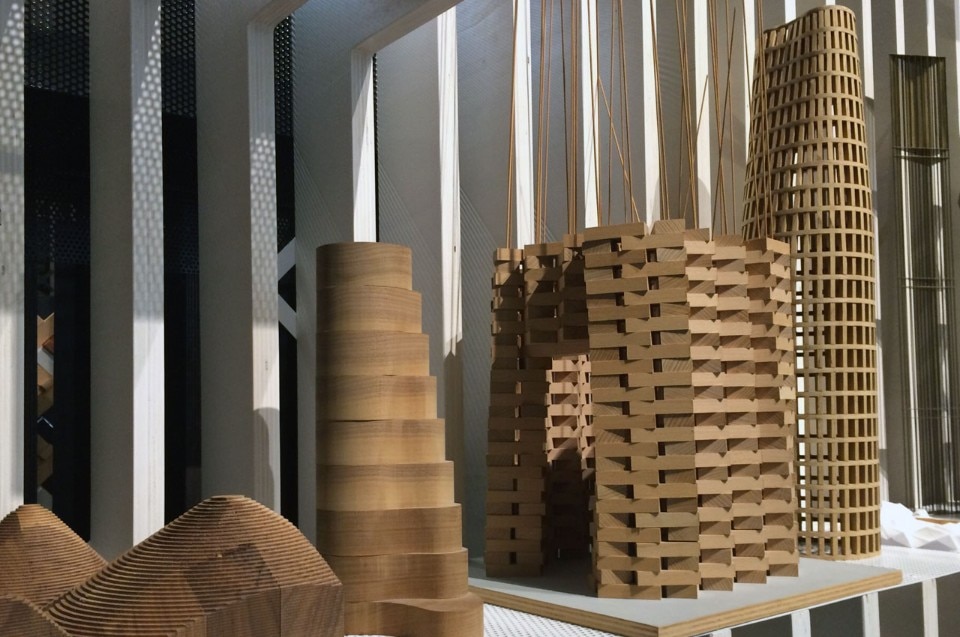
Deliberately adopting a non-philological approach, the curators have “invented” eight new categories for a selection of architecture and design productions placed in semantically uniform groups. The result is as many small sections along the exhibition route, in which each category corresponds to a design action or technique applied to materials: stacking, weaving, blowing, moulding, connecting, folding, engraving and tiling.
Within each grouping are recent and distinctive design objects and images and models of contemporary buildings or their parts. In the background is a collection of citations – historic photos referring to archetypes – and, at the entrance, a fine glass case containing drawings by famous designers of the past and a shelf with models by contemporary designers whose exploration of form has been based on technique: from Semper’s primitive hut to Lewerenz, Schmitthenner, Michele De Lucchi’s “little wooden houses” and Adam Caruso’s educational experiments ‘Structure and Pattern’ about connections at ETH.
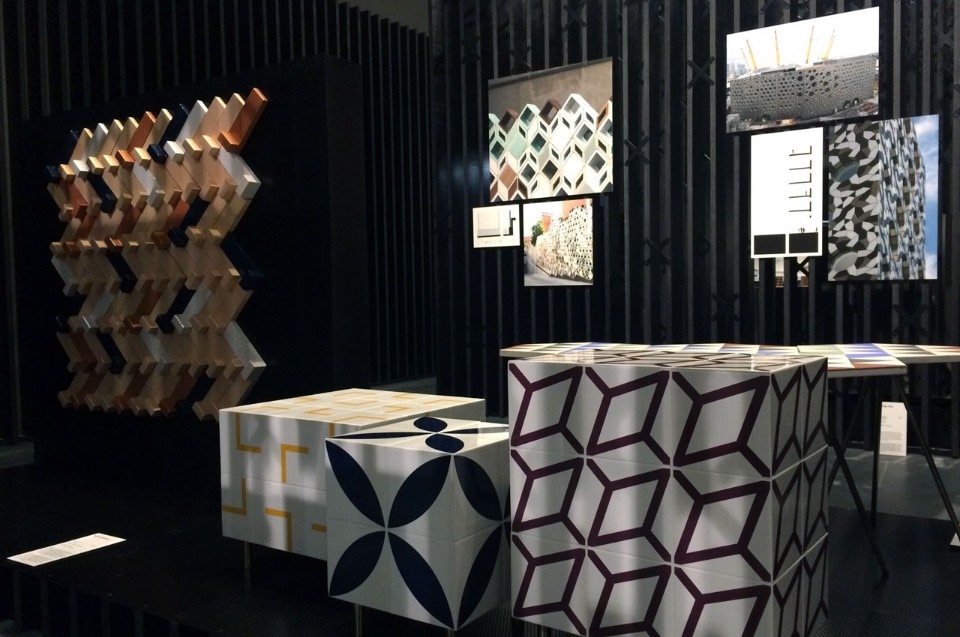
This rich medley of objects and designs raises doubts on the efficacy of the taxonomies chosen to assemble the works: for design, the categories of “operations” on materials have an immediate semantic correspondence with the objects displayed, more so than for architecture where some categories inevitably blur one into the other and where the relationship between body and surface is more complex.
In all, however, a reference to techniques is the leitmotif of the exhibition and the key to reflections on where it all ends.
Let us, however, come to the heart of the reflection, which revolves around the relationship between techniques and primary importance of decoration, the designer’s true ultimate domain, in a possible implicit reference by the exhibition to Frampton’s tectonic studies of the 1990s and the role of cladding, and therefore to the surface of artefacts.
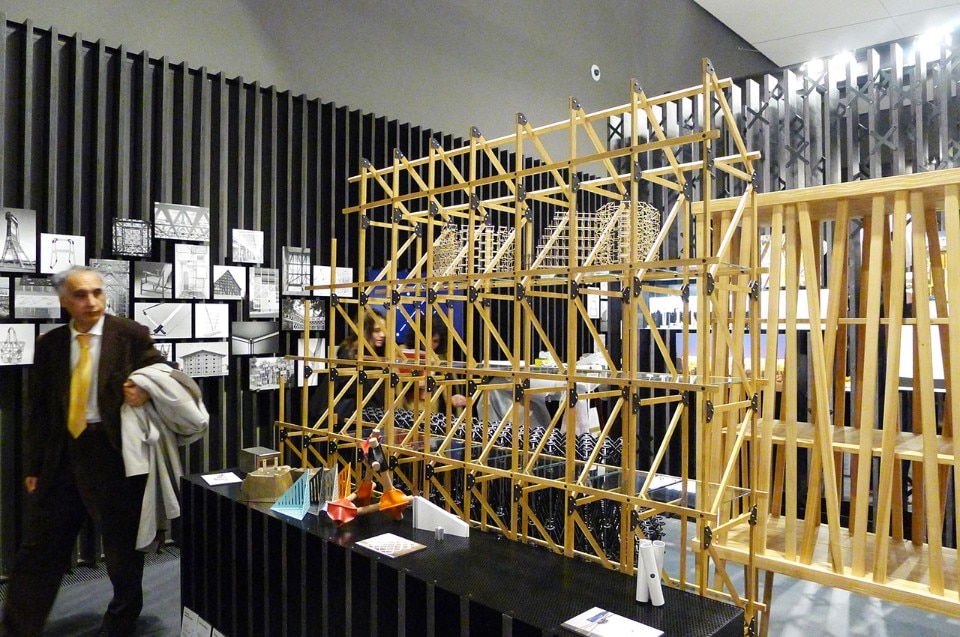
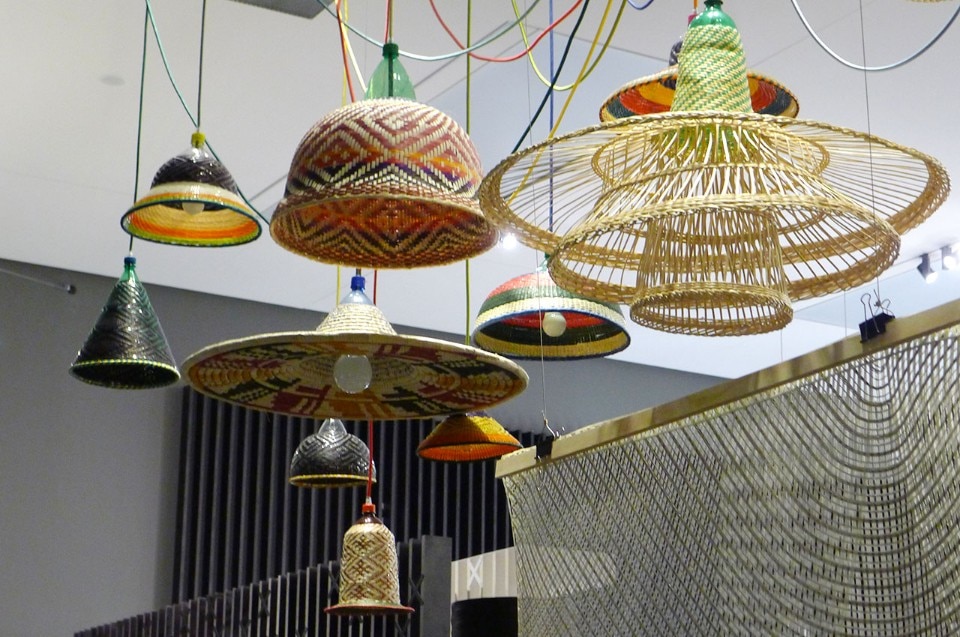
It might have been more effective if the architecture categories had featured a review of facades, fields better suited to Semper’s reinterpretation of the proposed actions. On the other hand, some actions – primarily belonging to product-forming processes such as moulding or blowing – transferred to contemporary architecture in the exhibition highlight an inevitable hybridization with design objects, with the ensuing reduction to inventions not far removed from a banalisation of the concept.
We hope this is not an isolated episode but will stimulate new thoughts and exploration of the links between forms and techniques – in both the conception and production of artefacts.


